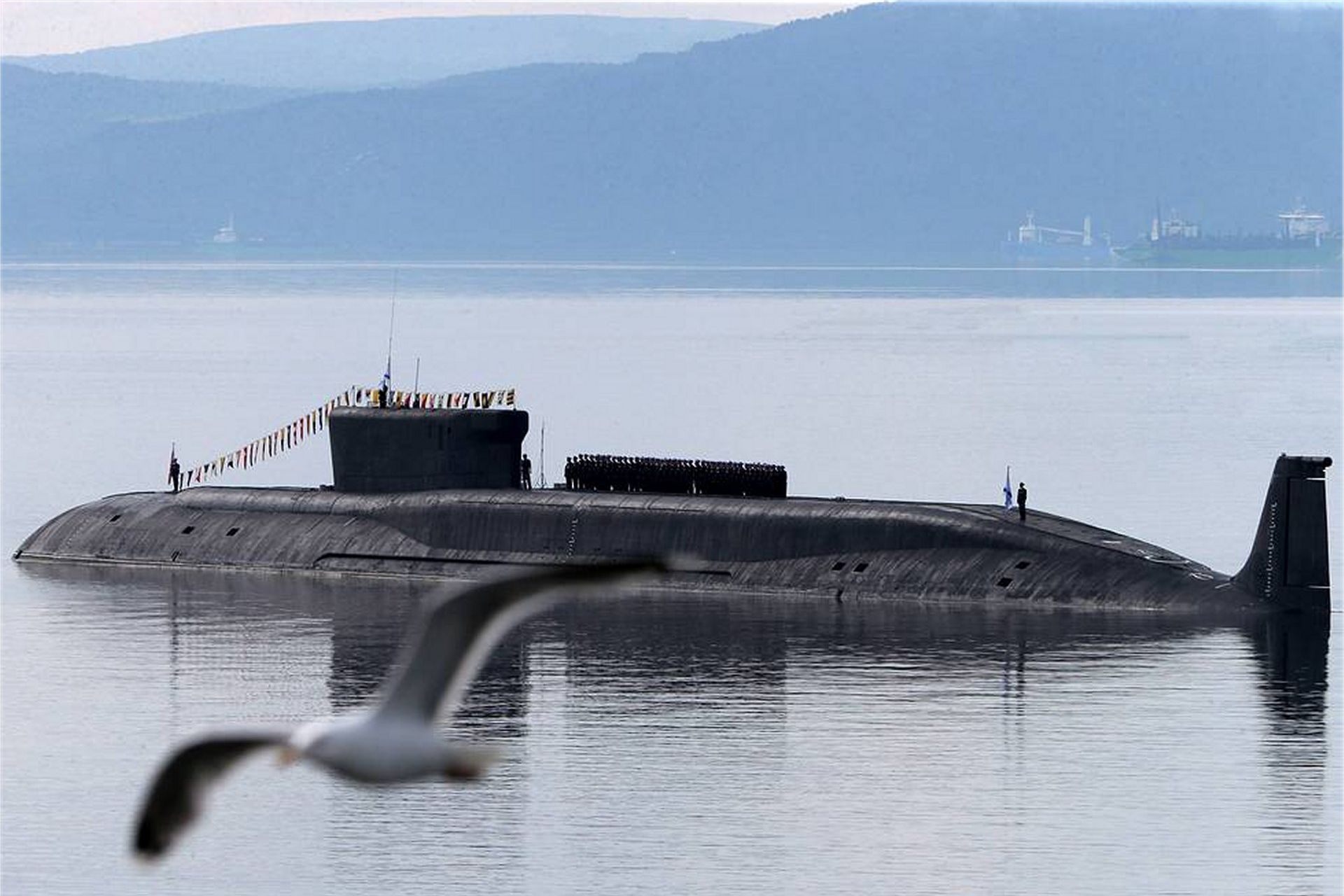Breaking News
Russia begins first scheduled overhaul of Yuri Dolgoruky nuclear submarine.
According to information published by Lenta on September In Russia, the first scheduled maintenance of the Yuri Dolgoruky strategic nuclear-powered ballistic missile submarine (SSBN) is underway. This information was shared by Vladimir Maltsev, head of the All-Russian Fleet Support Movement.
Follow Army Recognition on Google News at this link

Russian Navy's Borei class submarine Yuri Dolgoruky. (Picture source: Tass)
The Yuri Dolgoruky, the lead vessel of the Project 955 (Borey class), is undergoing its initial planned repair, which is expected to take two to three years. Upon completion, the submarine is expected to remain in service for at least another 20 years.
To date, the Russian Navy has received seven submarines from the Project 955 and 955A (Borey-A) classes, each of which carries 16 Bulava intercontinental ballistic missiles. The Yuri Dolgoruky was launched in 2008 and officially handed over to the Navy in 2013.
Additionally, in June, the Irkutsk, a Project 949AM submarine of the Russian Pacific Fleet, capable of carrying Zircon hypersonic missiles, had begun sea trials. Former Russian Defense Minister Sergey Shoigu announced that the Navy will receive the Project 955A (Borey-A) SSBN Knyaz Pozharsky and three other submarines in 2024.
About the class of submarines
The Borei-class submarines (Project 955/955A) are the latest generation of Russian nuclear-powered ballistic missile submarines, designed to replace aging Soviet-era submarines like the Delta III, Delta IV, and Typhoon classes.
The development of the Borei class began in the mid-1990s, following a significant decline in Russia's industrial and shipbuilding capacity after the dissolution of the Soviet Union. The first submarine of the class, Yury Dolgoruky, faced delays and entered service only in 2013 after more than a decade of development. These delays were attributed to various issues, including the decline of Russia's shipbuilding workforce and challenges with the development of its missile system, the R-30 Bulava SLBM.
The Borei-class design includes several innovations that enhance its performance, stealth, and endurance. The Borei-A variant features a more streamlined hull, improved electronics, and a more efficient propulsion system, making it quieter and more maneuverable than its predecessors. One of the key elements is the pump-jet propulsion system, introduced in the Borei-A class, which provides enhanced stealth capabilities by reducing acoustic signatures. These submarines are also equipped with a spherical sonar array for improved detection capabilities.
Construction of the Borei-class fleet is ongoing, with plans to complete at least ten units. The fleet is divided between the Northern Fleet, operating primarily in the Arctic, and the Pacific Fleet, reflecting Russia's strategic priorities of maintaining a nuclear presence in both Europe and the Asia-Pacific region.


























